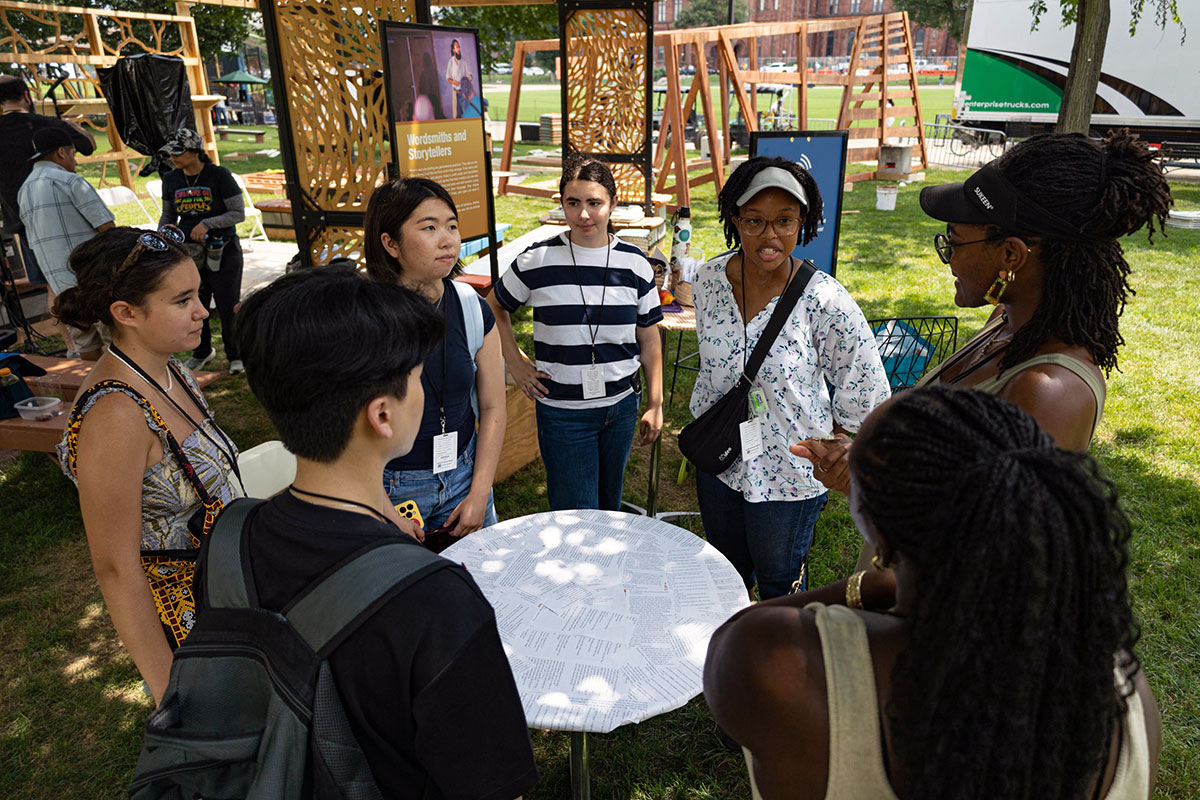Thriving on Stories: A Welcome Letter from the Festival Director

Festival program interns meet with the National Youth Poet Laureates as we set up the Wordsmiths’ Cafe the day before the Festival opens.
Photo by Cassie Roshu, Ralph Rinzler Folklife Archives
“I thrive on stories.”
—Olivia Cadaval
Well-told stories shimmer in the light, guiding our footsteps and carrying us through the unknown. Stories shape us. Scare us. Sustain us. They also connect us across generations, emerging in pinches of salt, flecks of paint, and sways of hips. The ones that linger are passed from teacher to student, mentor to mentee.
This year’s Smithsonian Folklife Festival program, Youth and the Future of Culture, is an ode to the intergenerational transmission of cultural knowledge. It may be a cliché, but the truth is that young and old are inexorably connected. Still, as lead curator Michelle Banks repeats, it behooves us to make spaces where we encounter youth on their own terms. This deceptively straightforward “single focus” Festival is both dense and expansive in outlook and ambitions.
Across the Festival grounds, you will encounter young people committed to creative practice and community engagement. In the process, they also ask difficult—and often uncomfortable—questions of their elders and peers even as they seek their insight and guidance. Be it about language reclamation, lowrider culture, heritage craft production, building trades, music making, skateboarding, and more, we warmly invite you into diverse conversation. Every touch point gives life to the program’s core themes: here are our worlds, engaging tradition, and the world we want. I encourage you to add your own reflections, experiences, and questions. Together, we may find new ways to deepen respect, connection, and understanding.


The Festival has a long history of featuring youth culture on the National Mall. As we look to the future, we must acknowledge women such as Kate Rinzler (1937–2010) whose work in children’s folklore continues to inspire so many. We also offer a profound thanks to our dear Olivia Cadaval (1943–2025). This tiny, fierce, generous woman represented the best of us while asking the best from us. A curator, mentor, scholar, and global wisdom sharer, she is missed beyond measure.
To my many colleagues, the Festival’s participants and partners, and event sponsors, a world of thanks. As we look to 2026 and the 250th anniversary of the signing of the Declaration of Independence, the Festival’s legacy and future promise take on new urgency. What you all have created here will order our steps for years to come.
To you, our visitors, I hope that the time we share and the stories you hear spark endless inspiration and curiosity.
Sabrina Lynn Motley
Director, Smithsonian Folklife Festival

